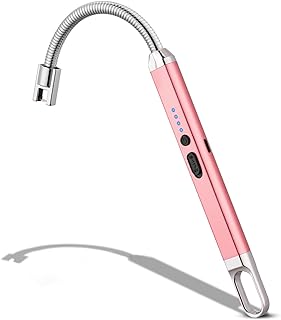Beyond the Flick: Exploring the History and Evolution of Lighters
The humble lighter, a seemingly simple tool, holds within it a fascinating history and evolution, reflecting human ingenuity and the changing times. From its humble beginnings to its modern iterations, the lighter's journey is one of innovation, necessity, and, of course, fire.
The Spark of Invention:
* The "Fire Stone" Era: Long before modern lighters, humanity relied on primitive methods like friction (rubbing sticks together) or striking flint and pyrite to create sparks. This method, while effective, was inconsistent and unreliable.
* The Dawn of the "Match": The first true "matches" appeared in the 19th century. These early matches used phosphorus, a highly flammable substance, which proved dangerous and even toxic.
* The Birth of the Lighter: The invention of the first commercially successful lighter is attributed to Johann Wolfgang D?bereiner in 1823. His D?bereiner's lamp used hydrogen and platinum to generate a flame, proving to be a safer and more reliable alternative to matches.
The Rise of the Modern Lighter:
* The "Flint and Steel" Revolution: The invention of the "flint and steel" mechanism in the 1890s revolutionized lighter design. This system used a small piece of flint striking against a steel wheel to create sparks that ignited a wick dipped in flammable fluid.
* The Era of "Butane": The introduction of butane in the mid-20th century marked a significant shift. Butane lighters were more powerful, safer, and cleaner than their predecessors.
* The "Disposable" Era: The invention of disposable lighters, often made of plastic, made lighters accessible and affordable for the masses, although it came with environmental concerns.
From Practicality to Style:
* The Lighter as a Status Symbol: Luxury lighters, made from precious metals and featuring intricate designs, emerged as status symbols in the 20th century. Iconic brands like Zippo and Ronson became synonymous with quality and craftsmanship.
* The "Design" Revolution: Lighters started to transcend their functional purpose, becoming expressions of personal style. Bold designs, unique shapes, and artistic collaborations made lighters more than just tools for igniting flames.
* The Digital Age: Today, lighters are being incorporated with digital technology. Smart lighters with Bluetooth connectivity, programmable flame settings, and even built-in temperature gauges are pushing the boundaries of lighter innovation.
The Future of Lighters:
* Sustainability: As environmental concerns grow, the focus shifts towards sustainable and eco-friendly lighters. Rechargeable lighters and those using alternative fuels are gaining popularity.
* Technological Advancements: We can expect further integration of technology into lighters, leading to features like voice control, advanced safety mechanisms, and even customizable flame patterns.
* Redefining Functionality: Lighters may evolve beyond their traditional role. We might see them incorporated into multi-purpose tools, such as emergency kits or even wearable devices.
The journey of the lighter is a testament to human creativity and the constant pursuit of progress. From sparking fires to igniting trends, the lighter continues to evolve, promising a future filled with innovation and convenience.


